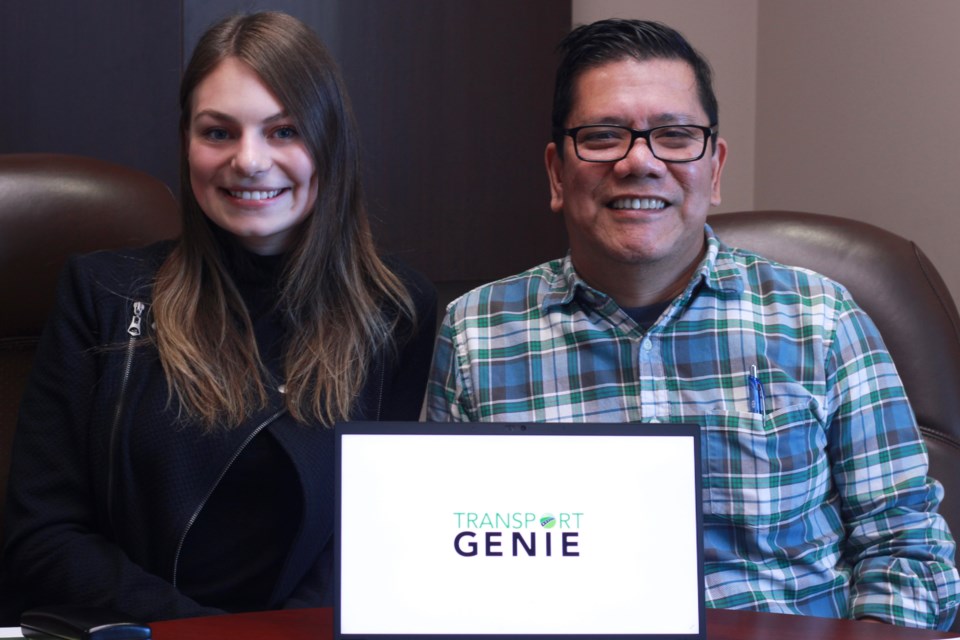A Guelph-based company is changing the way animals are transported on the road by introducing some ethics into the picture.
Transport Genie records microclimate conditions in vehicles of livestock transportation to ensure animals reach their destination in the safest and healthiest way possible.
CEO Joel Sotomayor says he got this idea a few years ago after a story of a Toronto woman who gave pigs headed to the slaughterhouse some water went viral.
The woman, Anita Krajnc, pleaded not guilty because she intended no harm and caused no injury to the pigs.
Sotomayor says when cars used for human transportation can monitor various safety components, animal transportation should be conducted in a similar way.
“When you look at what we have, we have steel containers and there are no sensors on it. Your car has more technology in it than these trailers that are travelling long distances and worth a lot of money,” says Sotomayor.
He says if you look at the entire food production model, the transportation component is the only piece that is visible to the public.
“You can’t go into a farm, you can't just walk in. After in the abattoir or the slaughter facility, you’re not allowed in either. So that piece, the transportation piece is the most visible piece where everybody gets to see it. Where it's open to the public and there's no technology being used to make sure they are safe,” says Sotomayor.
The way his business works is by collecting microdata before, during and after the transportation of the animals.
Information can be traced to what animals ate, what medicine they were given and the environment they were in to analyze the differences in health should anything go wrong during the journey.
Sotomayer says it adds a sense of accountability by being able to answer questions such as ‘was the animal sick prior to being loaded or got sick during transport?’
The data collected during transportation offers real-time alerts to the driver of the vehicle. It can set minimum or maximum temperatures for animals so they don’t suffer in the journey. It records CO2 and ammonia levels for animals who might emit the gases as a result of nervousness in their journey as well.
It also monitors the driver’s speed and even offers surveillance so the animals are taken care of every step of the way.
“There's a benefit for you to monitor your animals because if more than two per cent of your load or what you're carrying arrive in abattoir compromised or dead, it's an automatic 50,000 fine,” says Sotomayer, who adds that it can also create multiple legal problems.
“And that's what people want. People want full traceability and transparency.”
He says after Guelph won the Smart City Challenge, it’s important to continue to be a model for the circular economy.
“One of the things about the circular economy is not wasting anything. You know and being a good steward. Taking care of animals checks that checkbox,” says Sotomayer.
Transport Genie is currently working with the Ontario Veterinary Clinic to create microchips specifically with animals in mind.
Right now, the business is conducting trials in Ontario, Saskatchewan and Switzerland and will officially release the final design to the public mid-2020.
Transport Genie is also currently working toward becoming a Certified B Corporation which balances purpose and profit and legally requires businesses to consider the result of the decisions they make.
“You have to show that you're doing good for the environment and doing good for people as well,” says digital marketing specialist Laura Fallowfield at Transport Genie.
